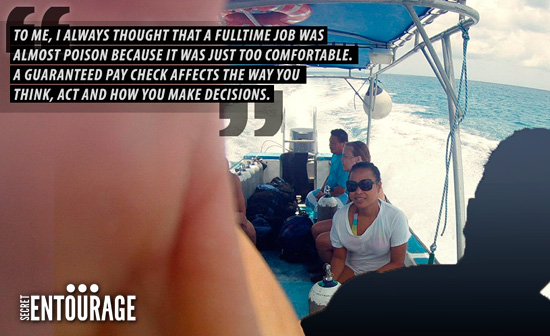
I’ve been a developer for a good part of my professional life, almost 9-10 years. Right out of school I was writing web apps for startups before the dot com bust. Growing up in the the DC area, one of the things you’re supposed to do after college is get a good job that’s secure. So that’s what I did.

I was a Management Information Systems major but I took one class in C++ during my last summer semester. I wasn’t actually a Computer Science major. It wasn’t even CS but one of the classes was C ++. I ended up doing really well in the class. So while I didn’t go to school for programming, everything I did right after school was all related to programming. I was actually a finance major for about two and a half years.
My real school was Barnes & Noble. Again, I only had one class in school dedicated to programming, so I didn’t have the academics behind theory and all that. I wasn’t great at math or anything either. However, I went to Barnes & Noble and got every single book I could afford related to programming. Eventually, I started writing my own apps and programs after going through tutorials. That helped me get my foot in the door as a programmer at my first job. I really had no business being a programmer with my background. I was actually lucky that the guy interviewing me knew less about programming than I did.
That kind of set the stage for using Barnes & Noble as a way to educate myself on how to build things. Instead of thinking “Oh, I got to go to school for this”, I just told myself I could learn it on my own.

It was fun and a great experience. I learned a lot there. That’s where I got most of my experience. I built huge projects from the ground up. I learned first-hand how to take a list of requirements and transform them into a production system. That’s where most of my hands-on experience came from.
On the first day of work at General Dynamics they set me up in an office with my back facing the door. Anybody walking by would see my monitor. I wanted to be facing the other way for privacy. The second problem was that they wouldn’t give me admin access on my own computer. All this was like a sign to get out of there. That lasted I think 4-5 days. It wasn’t even a full business week.

My first startup was a website called Screameleons.com. I had a pet chameleon and paid $350 for him. I spent about 10 minutes every morning taking care of him, but the redundancy of daily care made me wonder if I could monetize my time. I figured there’s got to be more guys like me that would spend $350 on a chameleon. Each chameleon laid 20 eggs 3-5 times a year. So 20 times $350 times 3 was a lot of dough for me at the time. Nobody was really doing it on the internet. Everybody kind of went to the expos to buy, which is how I bought mine.
I was thinking that if I could rank number one on Google for keywords like “buy chameleon” I’d definitely make a sale if they landed on my homepage. Where everybody was selling at these expos, I built a site just to sell chameleons that was SEO’d out to the max for every keyword combination related to chameleons.
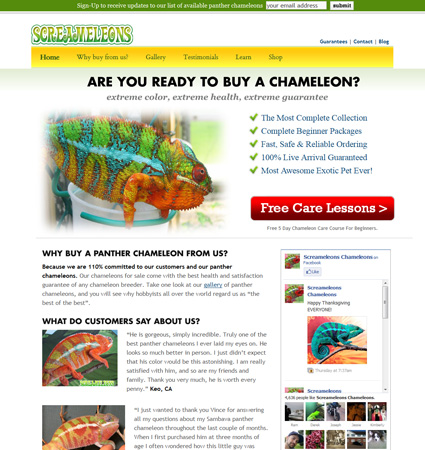
I remember the routines were get up at 5 AM, work, workout, go to work, as soon as you get home, eat, get back to work, eat. It was straight eat, sleep, workout and work routine. Saturdays and Sundays, I’d see all my friends going out to party, watch movies or play new video games. I didn’t care about any of that. I was focused on building something.
The one thing you have to be is a great employee. When you’re starting your new venture and you’re still a fulltime employee, you have to be the absolute best employee for your boss. This means you don’t half-ass your job. Don’t act like your side project is more important than your job. Obviously your side-project is more important. It’s ok to think like that. But don’t act like that. The bottom-line is that you have to be fair. That means delivering quality work and delivering on-time. Don’t give them any excuses.
In my case, I’ve always been able to deliver. Whatever they needed I always delivered it on time. If you are a great employee, you may even gain the support of your boss. I remember my boss saying “I wish I did something like this when I was your age.” So I kind of got support from them, but at the same time I was always delivering as an employee. I was never late. Also keep in mind that most people waste time at work browsing Facebook or websites. If you’ve got time to kill on Facebook and websites, kill it on building something meaningful. I was lucky to have a supportive group of people around me, but at the same time I was really good at what I did and I finished my job.

I think my second year with Screameleons.com was when I had built a cushion of predictable income. It made enough that I didn’t “need” to work a traditional job anymore. One of the first things I did was start working from home. Having a cushion gave me the confidence to ask my boss if I could work at home every day. I worked out a schedule where I never needed to go into the office unless I absolutely had to be there. In fact, I hadn’t gone to the office for almost two years with this schedule.
The thought of losing a consistent paycheck and great employee benefits was always on my mind. Programmers in the DC metro area working on defense contracts make very good money. While losing the guaranteed paycheck every month was always a consideration, I was never really fearful of it because I knew I could make it up. However, for some odd reason losing health insurance benefits did scare me. But it was because I never really understood how it worked. I just knew that every month they took a few bucks out my paycheck, and if any disaster happened I didn’t have to worry about paying for it. I tore 2 ACLs within 2 years and my total medical bills were well over $20,000. So this magnified my fear of “what if something happened…”
But this fear was irrational. One day I went online and searched for how much it would cost to insure myself the same way my company did. I got some quotes and the cost with the same deductibles and coverage was actually cheaper than what I had been paying with my employer. You have to build some cushion, but you don’t need a lot. Don’t over plan but at the same time don’t be reckless. I spent a day writing down all my expenses and came up with a total that I absolutely needed to come up with every month to survive. My biggest expense was my mortgage and all the costs of running Screameleons. Once I had that number in mind, I took a leap of faith knowing that every morning I’d wake up with the drive to hit that goal.
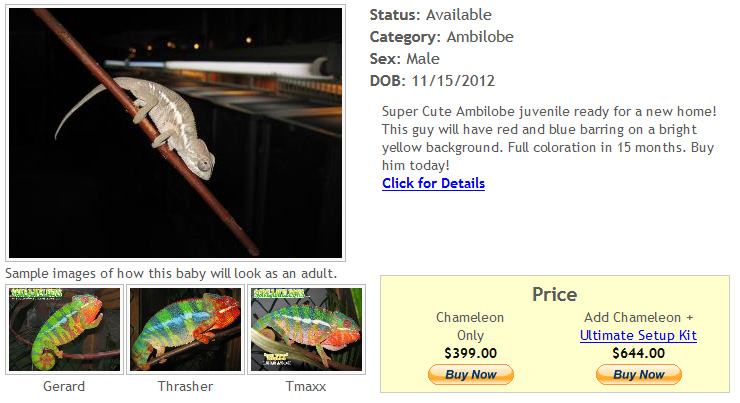
To me, I always thought that a fulltime job was almost poison because it was just too comfortable. A guaranteed pay check affects the way you think, act and how you make decisions. You collect a paycheck and money is one of the few things you don’t have to worry about. I definitely got used to it, and there was definitely some complacency in my life. With a steady paycheck, I could choose to do business the next day, or I could choose to take it easy.
However, the day that I was 100% on my own I saw a dramatic shift in my personality. My entire decision making process changed. When I knew that the only way I was going to get paid was if I hustled, something just clicked. Nobody was going to pay me, and more importantly nobody was going to pay for the roof over my head. My level of determination and drive shot up tenfold. With a job and paycheck, I’d be in bed by 10PM because I knew I had to be at work the next morning. Today, I’ll work until 3 in the morning without hesitation. During the job days, I would never do that. I would never be up until 3 in the morning writing code. That is the kind of complacency a paycheck will buy you.

I had just gotten out of school so you got to understand that I didn’t have the programming experience needed to build anything. That’s one of the reasons why I relied on Barnes & Noble. I got a book to learn the basics about building a web application. Also, one of the first things I did was leverage what was already built. I did not build everything from scratch. I found a content management system and built on top of that. It was pretty much like WordPress, but much older. It was free, open source, and written in C#. So I knew what language I needed to learn to build my own reptile shop.
Regarding marketing, the main marketing tool for me was Google AdWords. Back then, it was still pretty knew and nobody was using it to sell chameleons. So I didn’t have much competition. When I first started the site I was a nobody so paying for ads was not an option. I went to the bookstore and bought a book called “The Ultimate Guide To Adwords.” People weren’t really buying pets online so there wasn’t any roadmap to follow. I just started to figure out how to drive traffic to my site using what I had learned in the Adwords book. Eventually customers started trickling in and people were posting their chameleon photos on web. When anyone asked where they got it, they’d tell them Screameleons.com. That led to a lot of organic marketing, which helped us dominate the chameleon business online. Long story short, I didn’t build from scratch. Instead, I leveraged what was available to me. Today, this is even easier because there are tons of tools to help entrepreneurs get started.
We actually produce in house and work with partners. I spent six months searching for a house to run a chameleon business in. When I first started, I was running it out of my cousin’s basement and my friend’s garage. I needed more room to expand so after six months, I found the perfect house and built everything from the ground up to pump out chameleons. It was like a fulltime thing for me at that point. We spent the first four years producing a lot. Then we gradually started to work with partners that were producing the same, if not better, quality as us. Now we’re starting to shift our focus to working with more quality partners. Many of whom are also past customers.

It was all progressive. When I first started I didn’t know what it was going to do. I just knew that if I could produce 20 eggs and sell them at $350 a piece, I could get a new snowboarding gear every year. When I actually sold out of my first 20 in just a few weeks, I knew I could do this all day long.
Mhelpdesk is an app that I created with my co-founder Khoa Ho. One big lesson I learned with Screameleons.com was that I didn’t’ really create a business. I created a fun job that allowed me to work on my own terms. However, I wanted to create a true business that could run itself once it was set up. I wanted to generate passive income. So we came up with Mhelpdesk.com, which is a service and repair tracking app that runs in the cloud.
Given that most businesses in the United States are service-based, we wanted to create an app that lets them create a service ticket, track its progress, then send an invoice and get paid. We’re targeting users that offer services and repairs like computer techs, electricians, auto repair, plumbers, furniture repair, contractors, etc. It’s basically an app that helps them keep track of their entire business workflow. Most business owners want access to their data from their iPhones, Androids, laptops, office, home, bathroom, on the road, or whatever. We make it easy to do all that without having to set anything up. Managing a team of service staff has never been easier. Building Mhelpdesk in the cloud allows us to offer these capabilities.
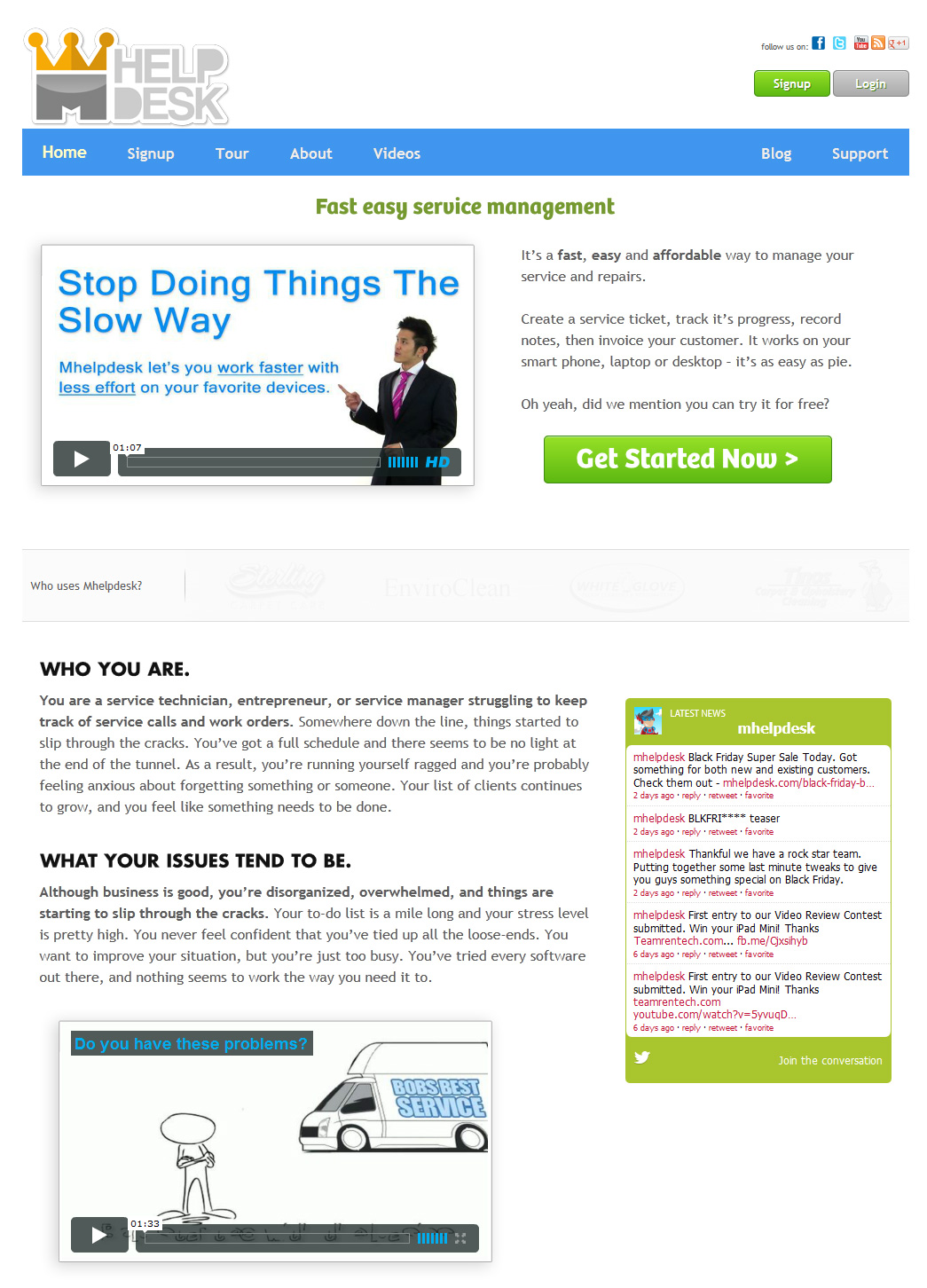
Coming up with the right pricing is a result of testing different price points. With a digital product like Mhelpdesk, the incremental cost to service each additional customer is very low. That gives us the flexibility to set virtually any price we want. We don’t have any tangible cost of goods sold per se, so most of our pricing factors revolve around the cost of customer service, new development, and infrastructure. With a rockstar team, even these costs can be low.
We have three levels of memberships. We have Bronze, Silver, and Gold as of today. Our Bronze plan is $39 a month and our Gold Plan is $149 per month. Our goal was to offer a price point that would scale with different sizes of businesses. But our pricing changes to reflect testing.
A few months ago, we didn’t even have a Bronze plan. It was $19 a month plan called the Starter Plan. We were closing a lot of sales at that price point, but the churn rate was high. We figured that at $19, we were probably attracting a lot of tire-kickers or businesses that were very early in the startup phase. So we doubled our prices to see what type of customers we’d attract. Our entry level plan went from $19 to $39. We noticed that we closed a slightly smaller number of sales per month, but the churn rate was near 0%. Overall, we were making more and keeping more per month. We figured that at a $39 entry point, we were attracting businesses that were more established and had a more pressing need for our app.
To date, we are still testing different price points and packages. The key is measuring the results over a 30 day to 90 day period. Get hard numbers when you measure. Don’t sit on a price too long if it’s not working. Don’t be afraid to test different price levels. Don’t look at a competitors price and follow. Our pricing has always been about staying profitable, having enough resources for new development, and scaling our infrastructure.

Right now, we have over 951 paying subscribers and over 5850 freemium users. By the time you read this the numbers will have grown significantly. The cool thing about our recurring revenue model is that we’re building a predictable stream of income. All the customers we acquired last month will continue to pay their subscription fees. Any customers we acquire this month will add revenue on top of that with little to no extra work. The life-time value of each customer is significant. Again, the incremental cost to service each additional customers is very low with electronic products. Combine that with the recurring revenue model and you got a winner. I recommend this model to anyone trying to start a business. It’s much more appealing than selling a product once and never seeing that customer again.
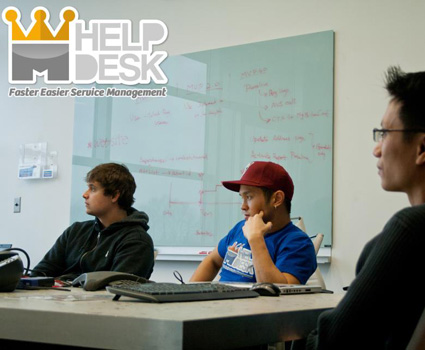

Most people will probably say focus on one niche. If you try to be everything to everyone you’ll end up being nothing or something to that effect. I’m still not convinced that you have to focus on any one single niche. We’re attacking several verticals in the service business. It’s arguable we should focus on the computer repair industry. However, if you look at the workflow of a computer repair tech and someone who repairs home appliances, the workflow is near identical. We’ve built our app to be highly customizable yet easy to use. That has allowed us to enter different markets. In fact, our current customer base isn’t any one vertical. It’s several.
Right now, most apps out there are focused on the IT industry. If you Google service management software you’ll see that the bulk cater to IT industry. The underserved market are all the little guys that don’t have companies making apps for them like the pool service guy, the plumber, the electrician, the guy that does oil changes, mobile windshield repairs, iPhone screen repair, etc. Those are the verticals that we have in Mhelpdesk. We’re not after the IT market. We’re after everyone that’s being ignored by all the software development companies.

We’ve been focusing on creating a business that sells automatically. For example, this morning I checked out the numbers, and out of the 94 signups we had in the last five days, seven of them purchased without ever picking up the phone or emailing us. This means they went to Google, searched for “service tracking software” and landed on our home page. They hit the green “Try now” button, signed up for a demo, and eventually purchased a monthly subscription. This happened without a single human intervening to sell them on Mhelpdesk. Can you sell software without a sales team? So far we’ve proven that it’s possible. Is it ideal? Probably not. Could we triple our revenue by setting up an outbound sales call team? Probably. You can automate a lot of the sales, but I’m learning that we’re leaving a lot of money on the table by not using the traditional channels like a sales team.
We also have auto responders that automatically send out email tutorials. We also have this whole tutorial interface where you log-in and get walked through the basics. Users learn how to use Mhelpdesk without a human being holding their hand. That’s the kind of system that we’ve been working on for the last several months. Again, we’re still leaving a lot of money on the table because the majority of users do desire human interaction. But we automate what we can.
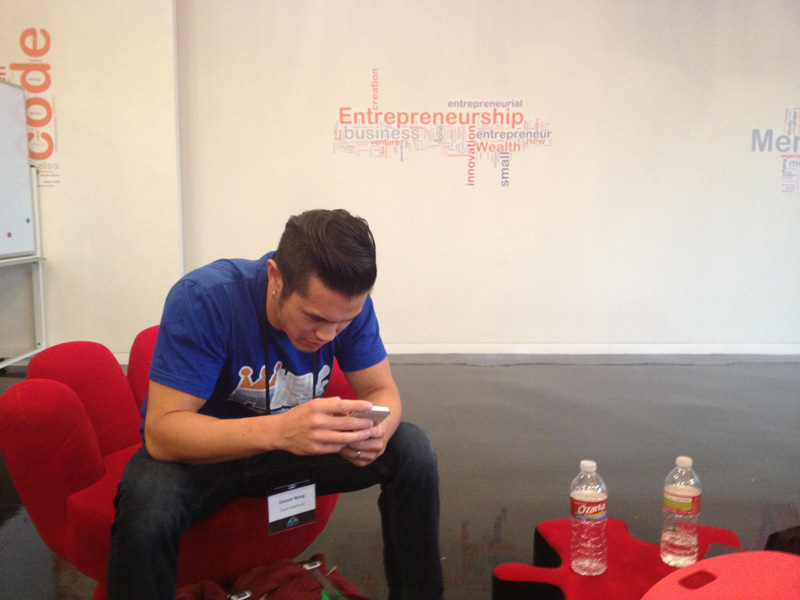
We’ve got a ton of positive reviews online. We maintain a 5 star review on Capterra. If you just Google the phrase “Mhelpdesk Reviews” you’ll see a ton of 4-5 star reviews about us. If you go on forums you’ll see a lot of praise about Mhelpdesk. There is this one website with over 30 detailed reviews submitted by real-world Mhelpdesk users. Social proof is one way to build confidence.
One other thing that builds confidence is your guarantees and policies. We don’t have any long-term contracts or hidden fees. If you don’t like Mhelpdesk you don’t pay for it. If you buy Mhelpdesk and later want to stop you can simply cancel it. Our policies all revolve around providing zero risk to try and buy. Put yourself in the shoes of your potential client and create policies that you yourself would be comfortable with.
The bottom line is you need to create a product that exceeds expectations. You need to make sure your product delivers and does what you say it will do. When users try your app for the first time they should be like “Wow. This actually works.” How you design your app and its usability is a key part of building confidence. If this isn’t happening with your product, don’t lock them in. Let them leave gracefully and learn from your mistakes.

First, I’m hyper-focused on Mhelpdesk right now. We aren’t going to stop until we knock this thing out of the park. We’ve grown our team from two to eight. We’ve brought on a new COO to focus on capturing revenue from channels we haven’t even explored yet. We’ve got a ton of new stuff on the roadmap. We are going to disrupt the space with better technology and a better user-experience. My team and I are gunning for global domination.
When we are taking a break, Khoa and I like to solve puzzles. Right now we are trying to figure out how to build an app without lifting a finger to write code. We are investing some money into an app called MeemStream. MeemStream is going to revolutionize the way we entertain each other. If Twitter and Instagram had a baby it would look like MeemStream. But other than that, I’m just enjoying life right now.
Code to Riches – Vincent’s Personal Blog
Mhelpdesk – Service Management Software
Screameleons – Live Chameleons for Sale
